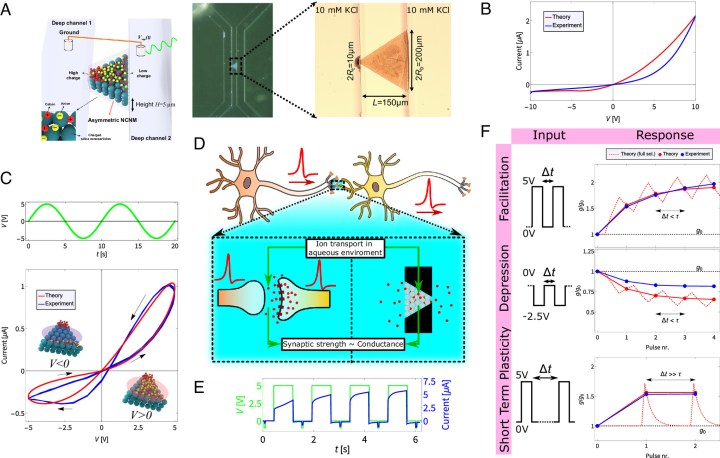Scientists from the Netherlands and South Korea have just built a device dubbed “iontronic memristor (memory resistor),” or in other words, an artificial synapse. This device, just a little bit wider than a human hair, mimics the part of the brain that helps us think and learn. This isn’t the first time scientists have tried to tackle creating a device that can resemble the thinking of the human brain, but this one’s special, because it’s not built like the others — it’s built like our brains.
So, what is this brain-like device, and why is it so special? Get ready for some science talk. The iontronic memristor has a tapered microfluidic channel, shaped like a cone, inside which sits a solution of salt (potassium chloride) dissolved in water. Yes, it’s literally just salt and water.
When the device receives an electrical signal, the ions in the water solution move up the channel and change their position, and this movement affects the ion density and conductivity. This basically changes how well the memristor can conduct electricity, which is similar to how our brain cells connect more strongly or weakly based on our experiences.
This might be the closest thing yet to resemble how our brains work in an artificial setting, and it’s different from previous attempts at the very foundation, because it’s made entirely out of water and salt as opposed to silicon and metals.
Although memristors have been used in various conventional platforms, they’re different from the human brain because they rely on only one source of information (such as electrons or holes) and only respond to electrical inputs. This differs from the way the synapses in our brains work, as they can rely on both electrical and chemical signals to get the job done.

Current applications of artificial intelligence, even the most advanced ones, don’t have the ability to think independently like human brains do. Meanwhile, large language models (LLMs), while they may sound like we do, are just a collection of words that other people (and machines) have said. Their ability to create stems from learning from humans and not from their own ability to think.
The research, led by doctoral researcher Tim Kamsma, is the joint result of work carried out by the Utrecht University in the Netherlands and the Sogang University in South Korea. It’s the first of its kind to use fluidic ion channels to emulate the complex fluid mechanisms in the brain; however, despite this leap, aqueous neuromorphic devices such as iontronic memristors are still in their infancy, and using them to build neuromorphic computers is still very much a work in progress.
While we’re a long way away, building devices like this is a stepping stone to the next era of AI — something that other scientists have tried to achieve in other ways, such as by using honey.



